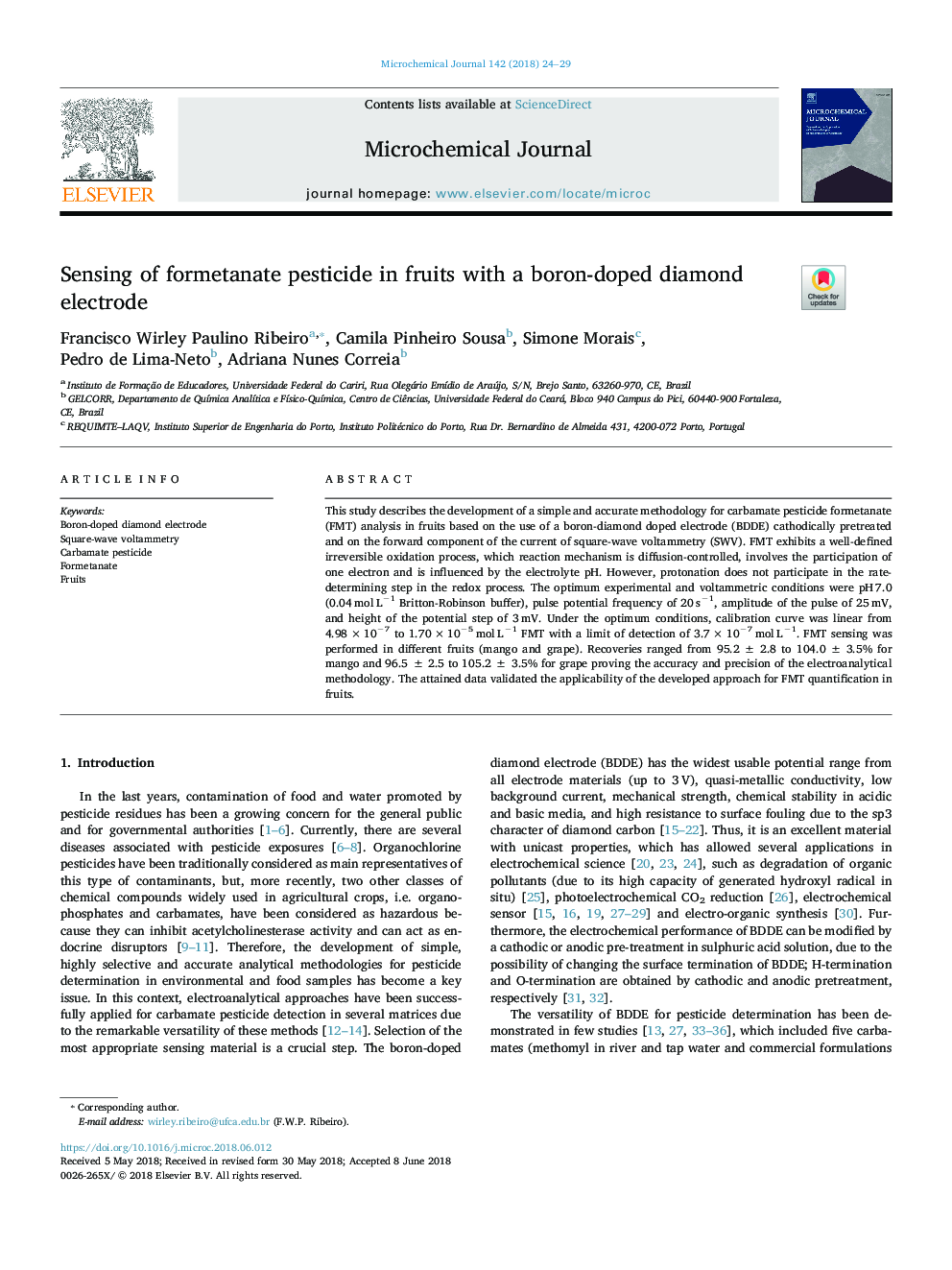| Article ID | Journal | Published Year | Pages | File Type |
|---|---|---|---|---|
| 7639883 | Microchemical Journal | 2018 | 6 Pages |
Abstract
This study describes the development of a simple and accurate methodology for carbamate pesticide formetanate (FMT) analysis in fruits based on the use of a boron-diamond doped electrode (BDDE) cathodically pretreated and on the forward component of the current of square-wave voltammetry (SWV). FMT exhibits a well-defined irreversible oxidation process, which reaction mechanism is diffusion-controlled, involves the participation of one electron and is influenced by the electrolyte pH. However, protonation does not participate in the rate-determining step in the redox process. The optimum experimental and voltammetric conditions were pHâ¯7.0 (0.04â¯molâ¯Lâ1 Britton-Robinson buffer), pulse potential frequency of 20â¯sâ1, amplitude of the pulse of 25â¯mV, and height of the potential step of 3â¯mV. Under the optimum conditions, calibration curve was linear from 4.98â¯Ãâ¯10â7 to 1.70â¯Ãâ¯10â5â¯molâ¯Lâ1 FMT with a limit of detection of 3.7â¯Ãâ¯10â7â¯molâ¯Lâ1. FMT sensing was performed in different fruits (mango and grape). Recoveries ranged from 95.2â¯Â±â¯2.8 to 104.0â¯Â±â¯3.5% for mango and 96.5â¯Â±â¯2.5 to 105.2â¯Â±â¯3.5% for grape proving the accuracy and precision of the electroanalytical methodology. The attained data validated the applicability of the developed approach for FMT quantification in fruits.
Related Topics
Physical Sciences and Engineering
Chemistry
Analytical Chemistry
Authors
Francisco Wirley Paulino Ribeiro, Camila Pinheiro Sousa, Simone Morais, Pedro de Lima-Neto, Adriana Nunes Correia,
